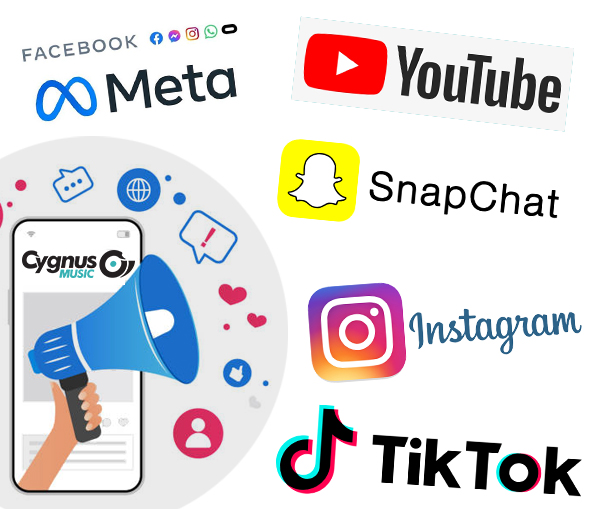Series 5: Bass Music
Audience verticals are crucial in music marketing as they allow artists & labels to tailor their promotional efforts to specific groups of listeners who share common characteristics, interests, and preferences. By understanding the distinct tastes and behaviours of different audience segments, music marketers can create targeted strategies that resonate more effectively.
This approach enhances engagement, increases the likelihood of converting listeners into fans, and maximises the impact of marketing campaigns.
The main aesthetics of Bass music include eSports, festivals and DJs.
Vertical: Esports
VERTICAL: Esports, here’s how Bass music might intersect.
Gaming Soundtracks:
Bass-heavy tracks are often used in gaming soundtracks to enhance the immersive experience of video games. These tracks can complement the action and intensity of gameplay, creating a dynamic and engaging atmosphere.
Livestreams and Content Creation:
Many gamers and Esports players create content for platforms like Twitch and YouTube, where they livestream their gameplay or create video content. Bass music can be used as background music during these streams to keep the energy high and provide an exciting auditory backdrop.
Montages and Highlights:
Esports players often create highlight reels and montages showcasing their best plays and moments. Bass music’s intense drops and rhythms are well-suited for syncing with high-impact in-game moments.
Competitive Play:
Create playlists that cater specifically to different study scenarios, such as “Late-Night Study,” “Productivity Boost,” or “Relaxing Reading.” Tailoring playlists to specific study needs can make the music even more appealing to students.
Esports Events and Arenas:
Esports events, both online and offline, often feature production elements like laser shows, light displays, and dramatic entrances. Bass music can contribute to the overall sensory experience of these events.
Gaming Festivals and LAN Parties:
Gaming festivals and LAN parties are gatherings where gamers come together to play, compete, and celebrate their shared passion. Bass music acts may be featured as part of the entertainment lineup at these events.
Vertical: Festivals
VERTICAL: Festivals, here’s how Bass Music might intersect.
Diverse Subgenres:
Bass music encompasses a wide range of subgenres, including dubstep, drum and bass, trap, and more. This diversity allows festivals to offer a varied lineup that caters to different musical tastes within the broader electronic music genre.
Live Performances:
Many prominent bass music artists are known for their captivating live performances, which often include impressive visuals, intricate light shows, and interactive stage setups. These elements enhance the overall festival experience.
Danceability:
The rhythmic and danceable nature of bass music makes it perfect for festival goers who want to groove, dance, or simply lose themselves in the music while enjoying the social aspect of the event.
Community and Culture:
Bass music has a dedicated and passionate fan base, often referred to as “bassheads.” These fans have created a unique festival culture characterised by a sense of community, shared interests, and a love for bass music. This sense of belonging adds to the festival experience.
Late-Night and Outdoor Stages:
Bass music is well-suited for late-night stages and outdoor venues due to its ability to create an immersive and mesmerising atmosphere. Festivals often feature dedicated stages or areas for bass music, attracting fans who want to dance the night away under the stars.
Collaborations and Crossovers:
Bass music artists frequently collaborate with other electronic and non-electronic artists, bringing a fusion of styles to festival stages. These collaborations can draw in a broader range of festival attendees.
Festival Headliners:
Some of the biggest names in bass music have headlined major festivals, showcasing the genre’s mainstream appeal and drawing large crowds.
Art Installations and Visuals:
Bass music stages often incorporate impressive visual displays and art installations, enhancing the overall sensory experience at festivals.
Crowd Interaction:
In certain subgenres of bass music, like dubstep, artists engage in crowd interactions that add an extra layer of excitement to festival performances.
Vertical: DJs
VERTICAL: DJs, here’s how Bass music might interact.
Common Genre Interest:
Many DJs specialise in playing and producing bass music or its various subgenres such as dubstep, drum and bass, and trap. As a result, fans of these DJs are often already inclined toward bass music.
DJ Performances:
Bass music DJs frequently perform at clubs, festivals, and electronic music events, where they play a mix of their own tracks and other bass-heavy tunes. These performances attract fans who enjoy the genre and the DJ’s mixing skills.
Remixes and Collaborations:
DJs often create remixes of popular bass music tracks or collaborate with bass music producers. This crossover between DJs and bass music producers introduces fans of one to the other.
Genre Fusion:
DJs often incorporate bass music tracks into their sets, even if they primarily play other electronic genres. This fusion allows them to cater to a broader audience and keep their sets dynamic and energetic.
Music Discovery:
DJs are tastemakers and music curators, introducing their audience to new tracks and artists. They frequently introduce fans to lesser-known bass music artists and tracks, expanding the audience’s musical horizons.
Online Mixes and Radio Shows:
Many DJs host online mixes or radio shows where they showcase various genres, including bass music. These platforms serve as a gateway for their audience to discover and explore bass music.
Production and DJ Skills:
Many skateboarders curate playlists of their favourite music to listen to while skating. Bass music frequently finds its way into these playlists due to its energising qualities and ability to keep skaters focused and motivated.
Diverse Subgenres:
Bass music encompasses a wide range of subgenres, and DJs often play a mix of these styles, catering to fans with different preferences within the bass music spectrum.
Fan Overlap:
Many fans of bass music DJs also have an interest in DJ culture and follow their favourite DJs on social media, attend their events, and support their releases.
In summary, audience verticals are essential for effective marketing, engagement, and success in the music industry. By identifying and catering to different segments of your fanbase, you can create meaningful connections, increase your impact, and build a sustainable and rewarding career in music.
